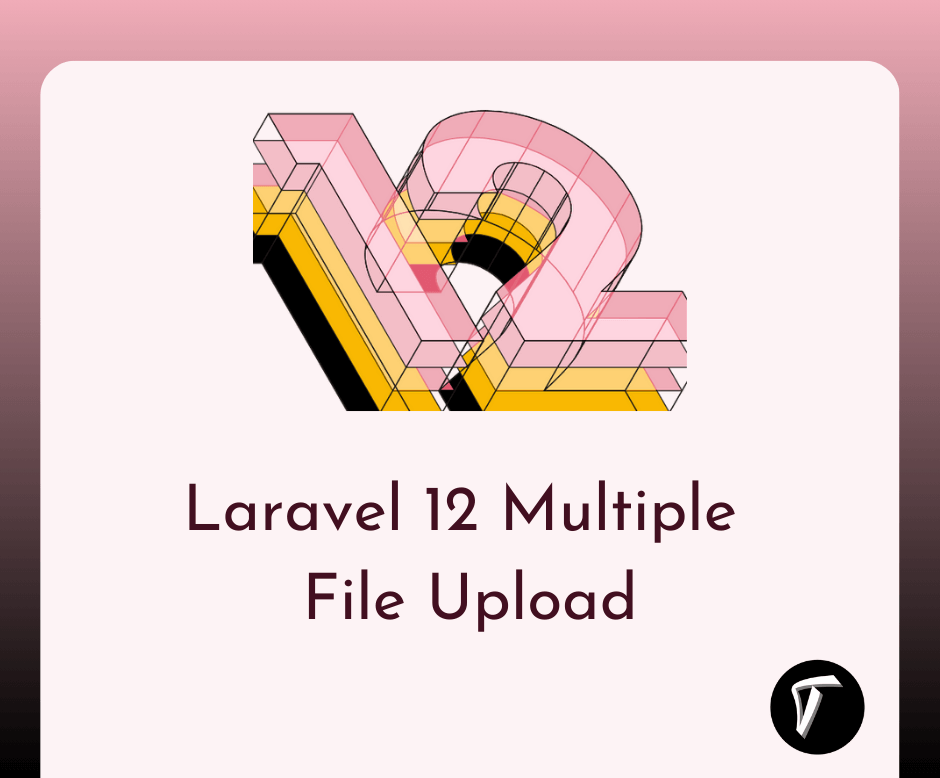Laravel 12 Multiple File Upload: Step by Step Guide
Uploading multiple files in Laravel 12 is a common requirement for many applications. Whether you're handling images, documents, or any other file type, Laravel makes it easy with its powerful file storage system.
In this tutorial, I will guide you through the entire process of implementing multiple file uploads in Laravel 12 with validation and storage.
Laravel 12 Multiple File Upload: Step by Step Guide

First, if you haven’t installed Laravel 12 yet, you can create a new Laravel project using Composer:
composer create-project laravel/laravel laravel12-multi-upload
Navigate to the project directory:
cd laravel12-multi-upload
Update your .env file with your database details:
DB_CONNECTION=mysql
DB_HOST=127.0.0.1
DB_PORT=3306
DB_DATABASE=your_database_name
DB_USERNAME=your_username
DB_PASSWORD=your_password
Then, run the migration command to set up the default tables:
php artisan migrate
Run the following command to generate a new controller:
php artisan make:controller FileUploadController
Open app/Http/Controllers/FileUploadController.php and update it as follows:
namespace App\Http\Controllers;
use Illuminate\Http\Request;
use Illuminate\Support\Facades\Storage;
use Illuminate\Support\Facades\Validator;
class FileUploadController extends Controller
{
public function create()
{
return view('file-upload');
}
public function store(Request $request)
{
// Validate files
$validator = Validator::make($request->all(), [
'files.*' => 'required|mimes:jpg,jpeg,png,pdf|max:2048',
]);
if ($validator->fails()) {
return back()->withErrors($validator)->withInput();
}
if ($request->hasFile('files')) {
foreach ($request->file('files') as $file) {
$file->store('uploads', 'public');
}
}
return back()->with('success', 'Files uploaded successfully!');
}
}
Add the following routes in routes/web.php:
use App\Http\Controllers\FileUploadController;
Route::get('/file-upload', [FileUploadController::class, 'create']);
Route::post('/file-upload', [FileUploadController::class, 'store'])->name('file.upload');
Create a new file resources/views/file-upload.blade.php and add the following HTML and Blade code:
<!DOCTYPE html>
<html lang="en">
<head>
<meta charset="UTF-8">
<meta name="viewport" content="width=device-width, initial-scale=1.0">
<title>Laravel 12 Multiple File Upload</title>
<link rel="stylesheet" href="https://cdn.jsdelivr.net/npm/[email protected]/dist/css/bootstrap.min.css">
</head>
<body>
<div class="container mt-5">
<h2 class="mb-4">Upload Multiple Files</h2>
@if(session('success'))
<div class="alert alert-success">{{ session('success') }}</div>
@endif
@if($errors->any())
<div class="alert alert-danger">
<ul>
@foreach($errors->all() as $error)
<li>{{ $error }}</li>
@endforeach
</ul>
</div>
@endif
<form action="{{ route('file.upload') }}" method="POST" enctype="multipart/form-data">
@csrf
<div class="mb-3">
<label for="files" class="form-label">Choose Files</label>
<input type="file" name="files[]" class="form-control" multiple>
</div>
<button type="submit" class="btn btn-primary">Upload</button>
</form>
</div>
</body>
</html>
Now, you can run the Laravel development server:
php artisan serve
You might also like:
- Read Also: Laravel 12 Multiple Image Upload: Step by Step Guide
- Read Also: How To Upload File On The FTP Server Using PHP
- Read Also: How To Export Data Into CSV File In Laravel 9
- Read Also: How To File Upload Using Node.js








